Braided-Steel Brake Lines: Save Your Rig from Stretched and Squished Lines
Earl's lines from JBA Speed Shop answer many off-road questions
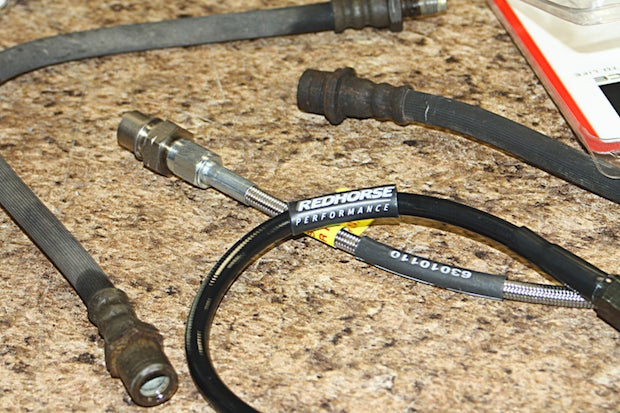
As trucks get modified for trail use, factory parts become overtaxed or stretched to their limits. In the case of brake lines - or any fluid or transfer hose - this stretching can be quite literal. Being able to replace the original-equipment hoses with longer, stronger or flexible (and routable) lines will solve multiple problems, or prevent problems from occurring at all.
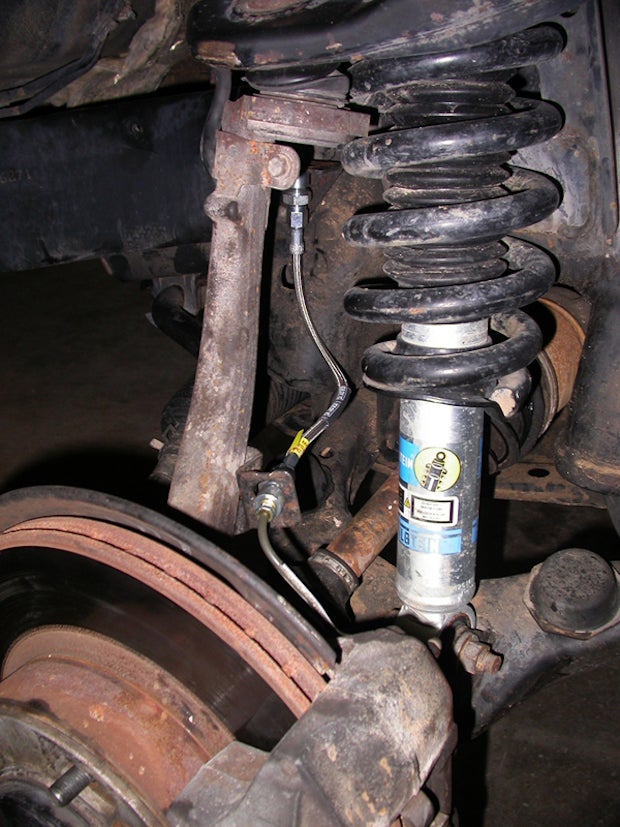
Custom or non-OE parts solve a lot of four-wheeling problems. However, while one-off, garage-built and fabricated buggies and trail toys live in this custom-fitted world, OE-based off-roaders need to stretch their perceptions to apply custom solutions to their factory-based challenges. For example, say you have a solid-axle crawler or an F-150 adventuremobile with a tent trying to make the most of an independent front suspension: you'll find that the OE brake-line options only reach so far.
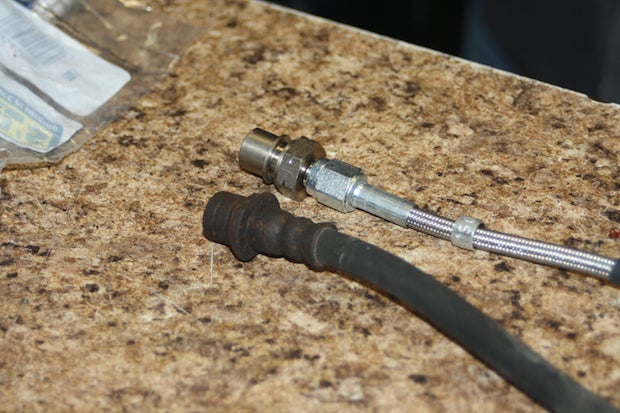
Custom-fitted braided-steel brake lines can stop this shortcoming. An added benefit of proper braided lines is that replacing the soggy OE rubber brake lines (that squish due to age or abuse) will once again give you a firm brake pedal, because braided lines are much more resistant to bulging or distorting under pressure.
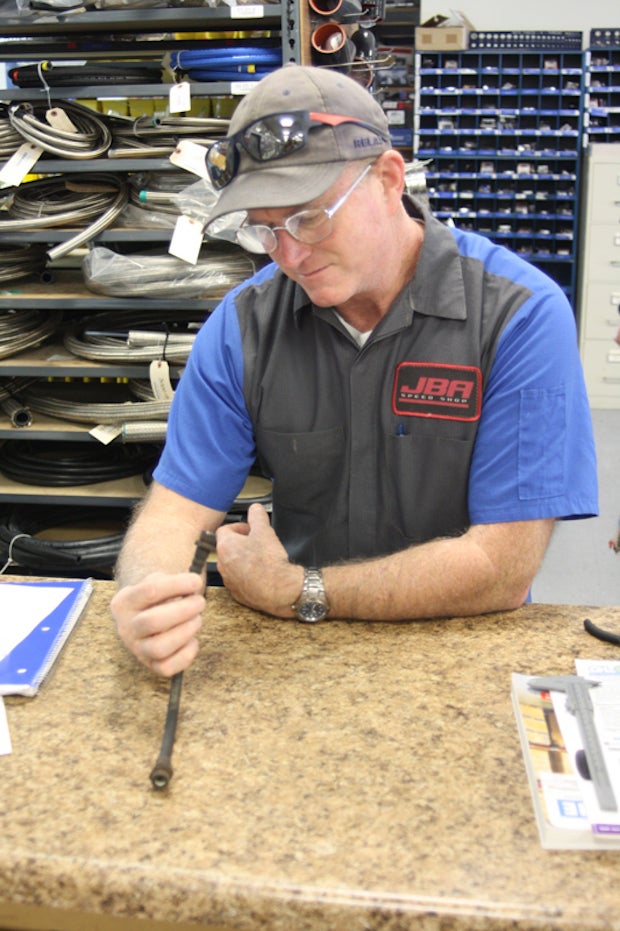
We went to San Diego-based JBA Speed Shop (the company you remember as JBA Racing) to math out right-sized lines and the necessary fittings to address our brake-line problems. JBA is well positioned to solve our shortage because the San Diego-based shop had recently bought the entire stock of Earl's Performance lines as well as the company's secondary brand, Red Horse. It's doubly reassuring to use an experienced speed shop, as they've done everything twice.
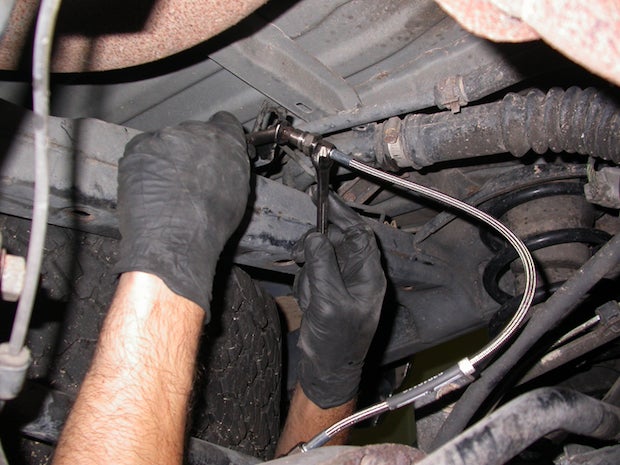
Our particular case of need was driven by Toyota's gen-three 4Runner: the uniquely dynamic rear axle turns a truck that would be somewhat restrained by its independent front suspension into a four-wheelin' freak (follow a third-gen 4Runner on-trail sometime and you'll understand - if that rear axle wasn't on a leash, it would wander away).
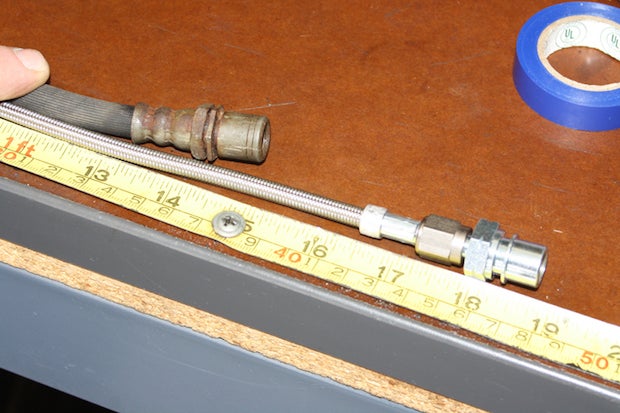
Point is, with just two inches of lift, the solitary center-mounted brake line supplying the rear axle's drums is at its limits. You can yank a few bolts and things dangle, or spend a few bucks with JBA for a braided line that adds necessary length and removes the risk of it being pinched, yanked or worn through.
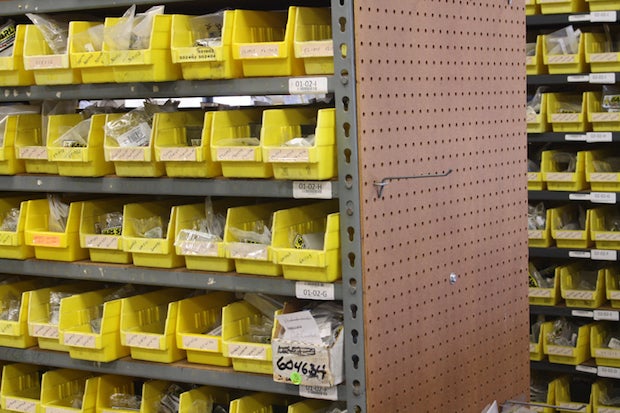
We chatted at length with JBA's Alex Conger about the ins and outs of fitting braided lines and brake line fittings. The particulars for the 4Runner application were easy to connect: factory-length in front (as the independent suspension was more about flex at the inboard end), and about four inches more length in the rear (to accommodate extended axle movement). In the process, Conger offered a long line of other facts about the use of this style of hardware. We've listed the most important below.
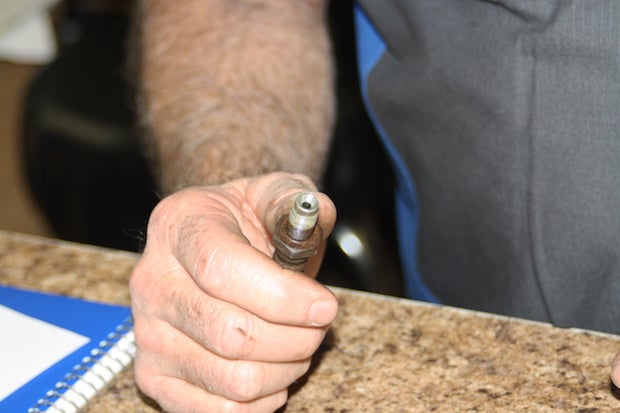
- You're never going to need machine force automotive line applications: these lines and their fittings should be tightened with hand tools to about 10ft-lbs.
- Do not overtighten - brake and line fittings register noticeably when "in."
- Pay attention for binding threads.
- Pre-fabbed lines cost a few more bucks because the hose ends have already been installed.
- Pre-fabbed lines are usually the best first option, so long as the supplier has the fittings you need.
- The fittings on a pre-fabbed line are crimped, rather than the bulkier compression fitting of a custom-length line.
- Both crimped and compression-fitted lines seal really well. Neither needs any sealer at the threads - the seal is at the taper.
- Pay attention to the style of hose end on your factory brake lines - there are differences, such as an inverted nipple or a convex end. The convex end is common on imports.
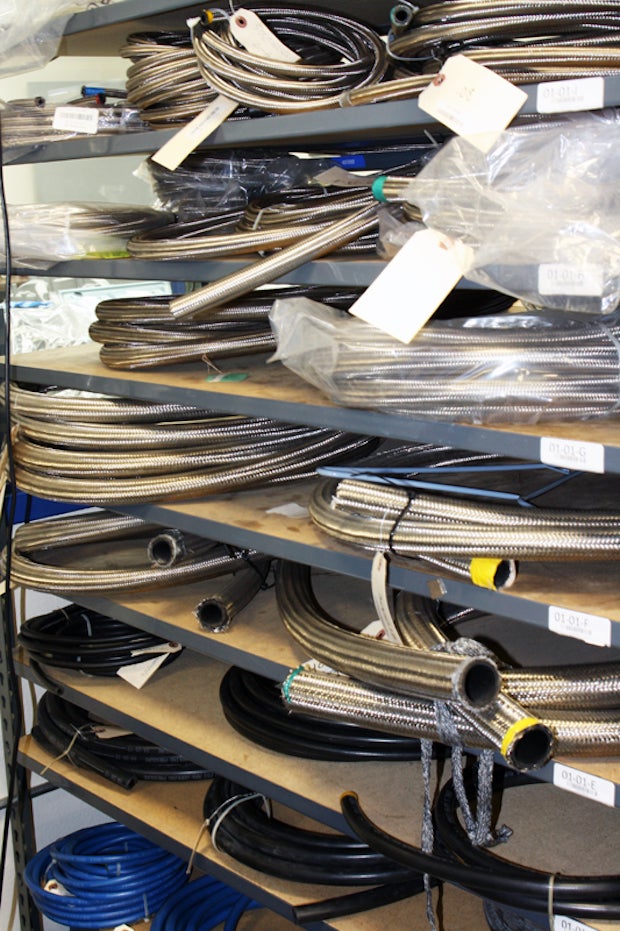
Resources:
JBA Speed Shop
5675 Kearny Villa Road
San Diego, CA 92111
JBAbaspeedshop.com/ (info@jbaracing.com)
888.522.5570.


 Your Privacy Choices
Your Privacy Choices